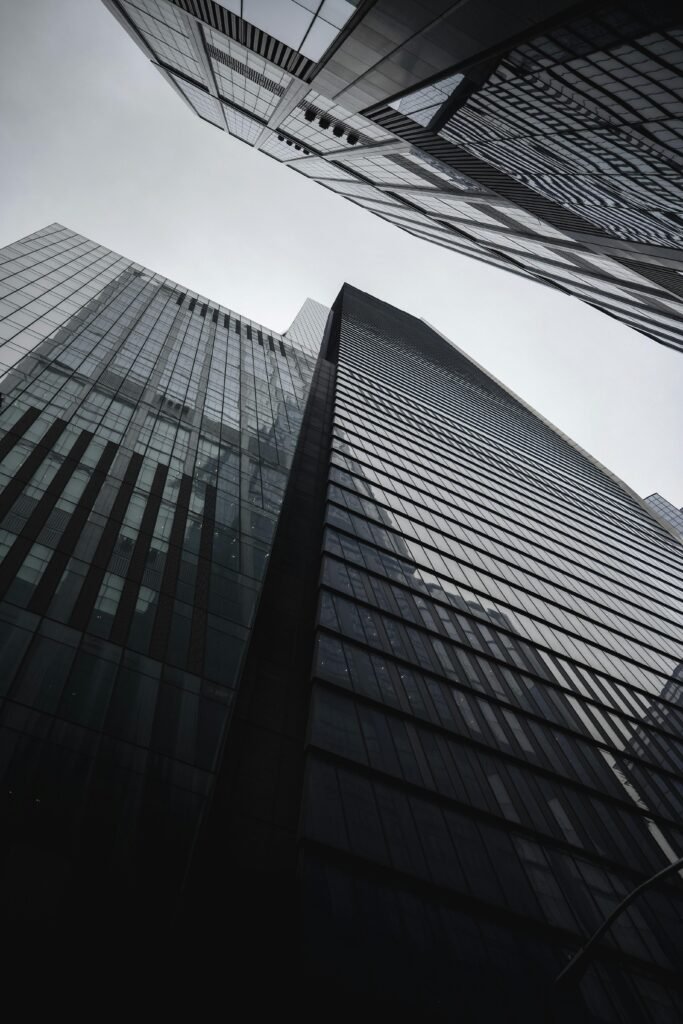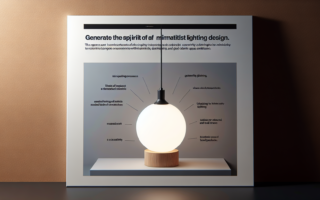Imagine walking into a room and being immediately enveloped in a warm and inviting atmosphere. The soft glow of modern lighting delicately illuminates the space, casting gentle shadows and highlighting the sleek and stylish decor. With the right choice of lighting fixtures, you can effortlessly create a contemporary ambiance in any room of your home. Whether you prefer minimalist pendant lights, futuristic floor lamps, or chic table lamps, exploring modern lighting ideas will undoubtedly elevate the aesthetic appeal of your living spaces and leave a lasting impression on anyone who enters.

Choosing the Right Lighting Fixtures
When it comes to choosing the right lighting fixtures for your space, there are several factors to consider. First and foremost, you need to think about the purpose of the room. Is it a functional space like a kitchen or a workspace, or is it a cozy, relaxing space like a bedroom or a living room? The purpose of the room will help determine the type of lighting you need.
In addition to the room’s purpose, it’s important to evaluate the existing decor. The lighting fixtures you choose should complement the style and aesthetic of the room. If you have a modern, minimalist space, you’ll want to choose sleek and simple lighting fixtures. On the other hand, if you have a more traditional or eclectic decor, you can opt for more ornate and decorative lighting fixtures.
Once you have considered the room’s purpose and evaluated the existing decor, you can determine the lighting needs. This includes considering factors such as the desired brightness level, the size of the space, and any specific areas that need extra lighting. By taking all of these factors into account, you can make an informed decision and choose the right lighting fixtures that meet your needs.
Layering Light for Depth and Ambiance
To create a truly inviting and dynamic atmosphere in your space, it’s essential to understand the concept of layering light. Layering light involves using different types of lighting fixtures to create depth and provide various levels of illumination.
Ambient lighting, also known as general lighting, is the foundation of any well-lit space. It provides overall illumination and ensures that the room is adequately lit. This can be achieved through the use of overhead light fixtures, such as recessed lights or pendant lights. Ambient lighting should be bright enough to evenly light the entire space, but not too harsh or overpowering.
In addition to ambient lighting, it’s important to incorporate task lighting into your space. Task lighting is focused, localized lighting that is used to illuminate specific areas where tasks are performed, such as kitchen countertops or office desks. This can be achieved through the use of desk lamps, under-cabinet lighting, or adjustable task lighting fixtures. Task lighting helps improve visibility and reduces eye strain, making it essential in functional spaces.
To add a touch of drama and visual interest to your space, consider accentuating with decorative lighting. Decorative lighting fixtures, such as chandeliers or pendant lights with unique designs, can serve as focal points in a room and enhance the overall aesthetic. These fixtures can be positioned strategically to draw attention to specific features or areas, such as an art display or a dining table. By incorporating decorative lighting, you can elevate the ambiance and create a captivating atmosphere.

Incorporating Natural Lighting
In addition to artificial lighting, incorporating natural lighting into your space can have a significant impact on its overall look and feel. Natural light not only provides a sense of openness and warmth but also offers various health benefits.
One way to utilize natural light is by maximizing the use of windows and skylights. Identify the areas in your space that receive the most natural light throughout the day and arrange your furniture accordingly to take advantage of it. By positioning seating areas or workstations near windows, you can create a cozy and well-lit environment that brings the outdoors in.
Another way to enhance natural light is by using mirrors strategically. Placing mirrors opposite windows or in areas where natural light reflects off them can amplify the amount of light in the room. Mirrors can also create the illusion of more space and add visual interest to the decor.
While natural light is desirable, there may be times when you need to control the amount of light entering a room. Window treatments, such as blinds, curtains, or shades, can help regulate the level of natural light. Opt for light-filtering or blackout options depending on the specific needs of the space. Window treatments not only provide privacy but also allow you to adjust the lighting conditions to suit your preferences.
Exploring Different Lighting Techniques
Understanding different lighting techniques can help you create various visual effects and highlight specific elements in your space. Here are some common lighting techniques to consider:
-
Up Lighting: This technique involves directing light upwards to highlight architectural features or create a sense of drama. Up lighting can be achieved using wall-mounted or recessed lighting fixtures.
-
Down Lighting: As the name suggests, down lighting involves directing light downwards. This technique is often used to illuminate specific areas, such as dining tables or countertops. Pendant lights or track lighting can be used for down lighting.
-
Wall Washing: Wall washing is a technique where light is evenly distributed across a wall, bathing it in a soft glow. This technique can help create a visually appealing backdrop and enhance the overall ambiance of the room.
-
Spotlighting: Spotlighting involves using focused beams of light to draw attention to a particular object or area. Spotlights can be used to highlight artwork, architectural features, or other focal points in the room.
-
Grazing: Grazing is a technique where light is directed along the surface of a textured wall or object to highlight its details. This technique can create depth and add visual interest to the space.
-
Silhouetting/Backlighting: Silhouetting or backlighting involves placing a light source behind an object or person to create a dramatic silhouette effect. This technique is often used to create a sense of mystery or highlight interesting shapes.
By experimenting with these different lighting techniques, you can achieve stunning effects and transform the ambiance of your space.

Using Unique Light Fixtures as Statement Pieces
If you’re looking to make a bold statement with your lighting, consider using unique light fixtures as focal points in your space. Statement lighting fixtures can act as works of art and add a touch of personality to your decor.
To find statement lighting fixtures, explore various sources such as specialty lighting stores, design magazines, and online platforms. Look for fixtures that catch your eye and complement the overall aesthetic of your space. Whether it’s an oversized chandelier, a sculptural pendant light, or a modern floor lamp, choose a fixture that speaks to your style and adds an element of visual interest to the room.
When selecting statement lighting fixtures, it’s important to consider scale and proportion. Ensure that the size of the fixture is appropriate for the space and complements the surrounding furniture and decor. A large fixture in a small room can feel overwhelming, while a small fixture in a large room may not have the desired impact. Take measurements and visualize how the fixture will fit into the space before making a final decision.
Mixing and matching styles can also create a unique and eclectic look. Don’t be afraid to combine different design elements and materials to create a harmonious yet unexpected combination. For example, you can pair a vintage-inspired chandelier with modern furniture or a sleek pendant light with rustic accents. Mixing styles adds visual interest and can create a truly one-of-a-kind atmosphere.
Playing with Color Temperature
Color temperature refers to the color appearance of light, ranging from warm to cool. Understanding color temperature can help you create the desired mood and atmosphere in your space.
The Kelvin scale is used to measure color temperature, with lower values indicating warmer light and higher values indicating cooler light. Warm light, around 2700-3000K, creates a cozy and inviting atmosphere. It is often used in living areas, bedrooms, and dining rooms to promote relaxation and intimacy. Warm light can be achieved through the use of incandescent or warm LED bulbs.
On the other end of the spectrum, cool light, around 5000-6500K, creates a bright and energizing atmosphere. It is commonly used in spaces where focus and productivity are necessary, such as offices or kitchens. Cool light can be achieved through the use of daylight or cool white LED bulbs.
Understanding the color temperature that suits each area of your space can help you create the desired ambiance. Consider using warm light in areas where you want to promote relaxation, and cool light in areas where you want to enhance focus and productivity.

Utilizing Dimmers and Smart Lighting Controls
Dimmers and smart lighting controls can greatly enhance your lighting experience and provide customizable options for different settings and moods.
Dimmers allow you to adjust the brightness level of your lights. This can be particularly useful in spaces where flexibility is essential, such as living rooms or bedrooms. With a dimmer switch, you can easily create a cozy and intimate atmosphere or brighten up the space for more functional activities. Dimming your lights can also help save energy and extend the lifespan of your bulbs.
Smart lighting options take customization to the next level. With the advancements in technology, you can now control your lights using smartphone apps, voice commands, or home automation systems. Smart lighting systems allow you to set up different lighting scenes for different activities or times of day. For example, you can preset a “movie night” scene that dims the lights and adjusts the color temperature for a cinematic experience. Smart lighting also offers convenience, as you can control and monitor your lights from anywhere using your smartphone.
Customizing lighting scenes can help create the perfect ambiance for any occasion, whether it’s a cozy dinner party or a productive work session. With dimmers and smart lighting controls, you have the flexibility to adjust the lighting according to your preferences and the specific needs of the moment.
Considering Energy Efficiency
In today’s environmentally conscious world, energy efficiency is an important consideration when it comes to lighting. Choosing energy-efficient lighting options not only reduces your carbon footprint but also saves you money in the long run.
LED lighting is one of the most energy-efficient options available. LED bulbs consume significantly less energy than traditional incandescent bulbs while providing the same level of brightness. They also have a longer lifespan, reducing the frequency of bulb replacements. LED bulbs come in various color temperatures and can be dimmable, making them a versatile choice for any space.
To optimize energy efficiency, it’s important to consider light placement. Ensure that your lighting fixtures are positioned strategically to maximize their effectiveness and minimize energy wastage. Avoid placing fixtures in areas where they could be blocked by furniture or other obstructions. By directing light where it is needed most, you can minimize energy consumption and create a well-lit space.
Motion sensors or timers can also contribute to energy efficiency. These devices automatically turn off the lights when no motion is detected or when a predetermined time has elapsed. They are particularly useful in areas where lights are often left on unintentionally. Motion sensors or timers can help reduce unnecessary energy usage and ensure that lights are only on when needed.
By choosing LED lighting, optimizing light placement, and using motion sensors or timers, you can create a well-lit and energy-efficient space.

Creating Mood Lighting with Light Placement
Light placement plays a crucial role in setting the mood and enhancing the overall aesthetic of your space. By strategically placing lights, you can create different effects and highlight specific elements in the room.
Experimenting with light direction can yield interesting results. Rather than relying solely on overhead lights, try incorporating lighting fixtures at different heights and angles. This can create depth and add visual interest to the space. For example, placing a floor lamp next to a reading nook or using wall sconces to flank a mirror can create an intimate and cozy ambiance.
Architectural features can be beautifully highlighted through effective light placement. Use accent lights or spotlights to draw attention to interesting details, such as exposed brick walls, textured ceilings, or unique architectural elements. By illuminating these features, you can add a sense of drama and make them the focal points of the room.
Artwork or decor can also benefit from thoughtful light placement. Install picture lights or directional spotlights to highlight paintings, sculptures, or other decorative items. This not only enhances their visual appeal but also adds a layer of sophistication to the room. Experiment with different angles and intensities to create the desired effect.
By playing with light placement, you can transform the mood and atmosphere of your space, taking it from ordinary to extraordinary.
Maintaining Lighting Fixtures and Bulbs
Proper maintenance of your lighting fixtures and bulbs is essential to ensure their longevity and optimal performance. Here are some tips to help you maintain your lighting:
Regular cleaning and dusting of your lighting fixtures is necessary to keep them looking their best. Use a soft cloth or a microfiber duster to remove any dust or debris that may have accumulated on the surface. Be sure to turn off the power before cleaning and avoid using abrasive materials or harsh chemicals that may damage the fixture.
Replacing bulbs regularly is important to maintain the desired level of brightness and color temperature. Over time, bulbs can become dimmer or shift in color, affecting the overall lighting quality. Keep track of the lifespan of your bulbs and replace them when necessary. LED bulbs have a longer lifespan compared to traditional incandescent bulbs but may still require replacement after several years of use.
When troubleshooting lighting issues, it’s important to follow proper safety procedures. If a light fixture is not working or flickering, check the connections and ensure that the bulb is properly inserted. If the issue persists, consult a qualified electrician to avoid any potential hazards.
By taking care of your lighting fixtures and bulbs, you can ensure their longevity and optimal performance, allowing you to enjoy a well-lit and visually appealing space for years to come.
In conclusion, choosing the right lighting fixtures involves considering the room’s purpose, evaluating the existing decor, and determining the lighting needs. Layering light through ambient lighting, task lighting, and decorative lighting can create depth and ambiance. Incorporating natural lighting, exploring different lighting techniques, using unique light fixtures as statement pieces, and playing with color temperature can further enhance the visual appeal of your space. Utilizing dimmers and smart lighting controls, considering energy efficiency, creating mood lighting with light placement, and maintaining lighting fixtures and bulbs ensure a well-lit and inviting atmosphere in your home or office. With these tips in mind, you can transform your space with the power of modern lighting.



